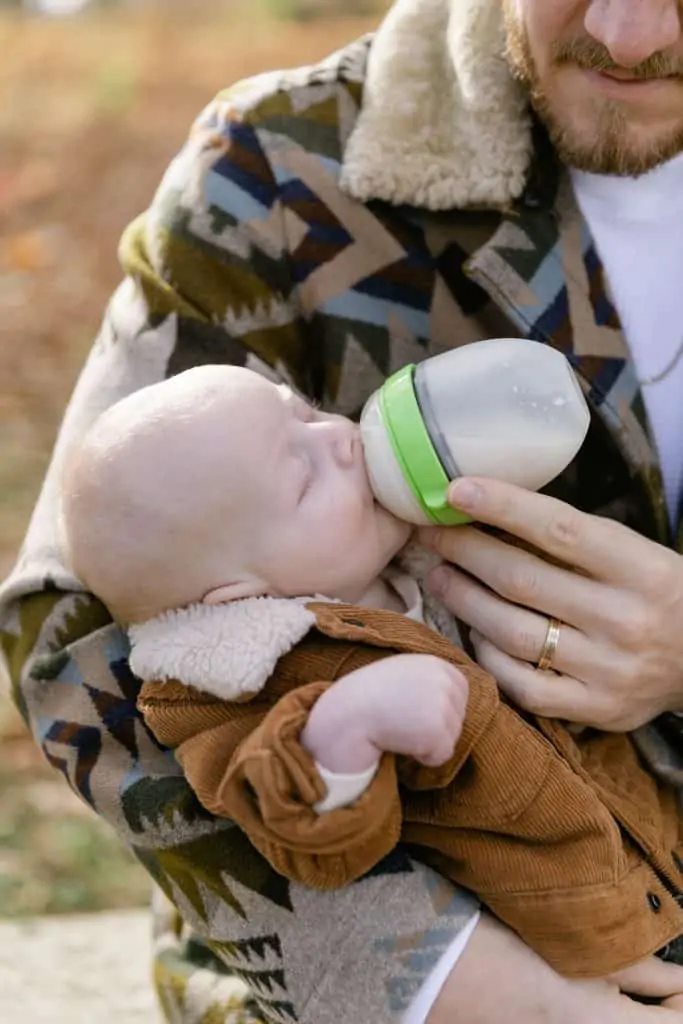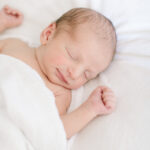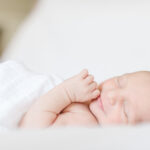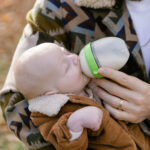Formula Basics for Babies
Whether you are formula feeding from the start or need to supplement your breastfed baby with formula, here’s what you need to know for those early days and weeks.

Formula Basics for Babies

Written by: Jessica Diamond, MPH, RDN
Whether you are formula feeding from the start or need to supplement your breastfed baby with formula, here’s what you need to know for those early days and weeks.
Ready-to-Use vs. Powder Formula
Formula comes in two main forms: ready-to-use and powder. Ready-to-use formula is sterile since it comes pre-mixed and is very easy to use – you just attach a sterile nipple and feed! Because it is sterile, ready-to-use formula used for many premature newborns or newborns with compromised immune systems.
In contrast, powder formula is not sterile, but it is still easy to mix and appropriate for most infants. Just make sure to purchase formula that is intended for a newborn (or clear your formula choice with your pediatrician). Believe it or not, there is a difference between newborn formula and formula for an older infant, so make sure you purchase the formula that is right for your baby.
General Formula Prep
- Check the expiration date and make sure the formula isn’t damaged. Wipe the outside of the formula can or container to make sure it is clean before mixing. For powdered formula, always look at the formula after opening to make sure it’s not discolored and that there’s nothing in there that shouldn’t be.
- Wash your hands thoroughly before preparing formula.
- Prep your bottles. Make sure all parts of the bottle (bottle, nipple, caps, etc.) are sterilized before first use. You can sterilize the parts by boiling them in water for at least five minutes. After the first use, you can wash your bottles either by using hot water and soap and letting them air dry or by putting them in a bottle cleaner or UV sterilizer. Check out our favorite bottles and cleaning products here.
Steps for Powdered Formula
- With a measuring cup, add cool water to the bottle before adding in the powdered formula. Follow the instructions on the formula for the appropriate amount of water to add. You can use any clean water for this, whether bottled or filtered tap. When using tap, it’s always a good idea to let the faucet run for 15-20 seconds before using it to flush out potential impurities. (If you are using well water or are concerned about what’s in your water, contact your pediatrician for safe handling.)
- Using the scoop that comes with the formula, precisely measure out the number of scoops needed. Measurement of powdered formula should be precise, so scoop the formula, but don’t pack it in, and then use the flat side of a knife to level off the formula scoop. For many typical formulas it is one level (not packed) scoop of powder for every 2 ounces of water but make sure to follow the instructions on the formula you use for the appropriate ratio of formula to water.
- Add the scoop(s) to the water already in the bottle.
- Attach a clean nipple and cap and then shake well.
- Warm up formula, if needed.
- If you prepare formula in a bottle ahead of time and haven’t given that bottle to your baby, you can store it in the refrigerator for up to 24 hours as long as you put it in the refrigerator within one hour of mixing it.
- Store unopened and opened containers of powdered formula at room temperature in a cool, dry place.
Steps for Ready-to-Use Formula:
- Ready-to-use formula is just that, so don’t add water or anything else to it. Use the single serve bottle provided or pour enough formula mixture into a clean bottle.
- Attach a clean nipple and cap. Check instructions to see if formula needs to be shaken.
- Cover and refrigerate any unused formula. Throw out any open formula after 48 hours.
- Store unopened containers at room temperature in a cool, dry place. .
Warming Tips
- You don’t need to warm up formula: you can give it to your baby cold or at room temperature. However, you can warm it up if your baby prefers warmed bottles.
- To warm formula, use a bottle warmer or place the bottle in a warm bowl of water and let it sit for a couple of minutes. After warming, the formula should feel warm but not hot.
- Do not heat the formula in a microwave, since this can create “hot spots” that will burn your baby.
Safe Storage Tips
- Formula that is left in the bottle after a feeding should be thrown out since bacteria from your baby’s mouth can remain in the bottle, even with refrigeration.
- You can refrigerate prepared (but never used) formula in the refrigerator following the guidelines above, but never freeze formula. This can change the composition of the formula, and it may not be safe for your baby.
Check out Our Top Formulas here.
Want to learn more about the ins and outs of feeding your growing child? Check out the following resources:
- Infant Feeding 101: Breaking Down Breastfeeding and Formula – this podcast episode is a mini course on all the basics of infant feeding!
- Newborn Nutrition 101
- Our Top Formulas
- How to Bottle Feed Your Breastfed Baby – also good resource for bottle feeding
- Our Favorite Bottle Feeding Products
- Breastmilk Storage Tips
- Breaking Down: Baby Poop
- Why I Chose Not to Breastfeed Atlas
And make sure to take our Feeding Your Baby Solids course once your baby is 3 months or older. Trust us, it will be the best money and money spent.





